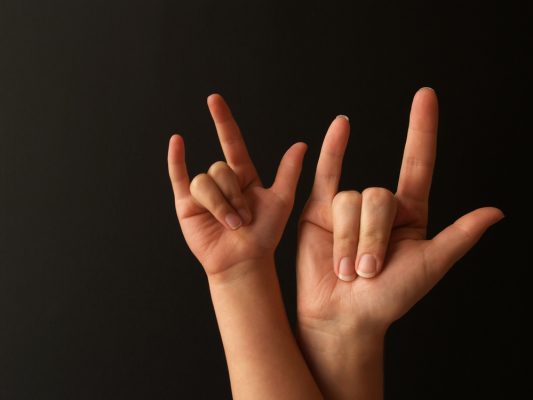After being recognized as a reliable method of communication, sign language was adopted by countries across the globe. People who previously were not able to hear or speak now used this newfound language to express their feelings.
This is the second part of a two-part article. You can read part one here:
A Brief History of Sign Language
After making a big impact in European countries, sign language saw further significant developments in the United States of America. In fact, it came to be renamed as American Sign Language or ASL.
Thomas Gallaudet and Laurent Clerc were the first to make important contributions.
Significant developments outside of Europe
Laurent Clerc came to the USA with Thomas Hopkins Gallaudet, to found the American School for the Deaf in Connecticut, in 1817. Laurent was the student of Massieu, who was, in turn, the student of l’Epee and Sicard.
Together, both of them founded the American Asylum for the deaf in Hartford in 1817. This institute was the first of its kind but was certainly not the last. Soon, other establishments started opening up and began recruiting teachers who could teach uneducated deaf in the region.
It may be said that Thomas Gallaudet started a sort of revolution in the US. Before this point, people did not have the means to educate the deaf and dumb. After the success of primary education, authorities realized that a higher education system was also required.
In 1957, Edward Gallaudet became the principal of the Columbia Institution for the Deaf and Dumb and Blind. The school became the world’s first higher education college for deaf people.
The struggle for a new Language
In 1977, H. Feldman and S. Golden-Meadow documented that many children were suffering from isolation. The reason being that their parents wanted to teach them lip-reading instead of sign language. In spite of the overall success of sign language, oralism supporters believed that people should learn spoken language to communicate.
Even Alexander Graham Bell was a devoted supporter of oralism. The feud between sign and spoken language continued. During the Milan Conference on deaf education, in 1880, this became the primary issue. The International Congress attended it and the ensuing vote went in favor of oralism.
The outcome of the conference yielded devastating results. In the following decade, much of the work accomplished by sign language came undone, due to the influence of oralism.
The National Association for Deaf, founded in USA, argued that oralism was not the best form of communication for the deaf.
The revival of Sign Language
It was a professor from Gallaudet University who reinstated sign language to its former glory. He published a dissertation proving that ASL is a genuine language. It contains grammar and syntax, which is unique to the language.
In 1964, the Milan Conference was finally superseded, and ASL became a nationally recognised language.
In 1988, the Gallaudet University witnessed yet another major event known as the Deaf President Movement (DPN) with the sole intention of appointing a deaf principal to run the university.
Irvin King Jordan, who was a faculty member at that time, became the first deaf president. Andrew Foster, an African American student, became the first to obtain a Bachelor’s Degree from Gallaudet University in 1954.
Gallaudet remains, today, a thriving university for, and largely run by, the deaf and hard of hearing. It is still one of the leading education programmes for the deaf. However, happily it is now one of a great many!
–––––––––––––––––––––––––––––––
If you found this interesting, you may also enjoy our two-part article on Nicaraguan Sign Language:

